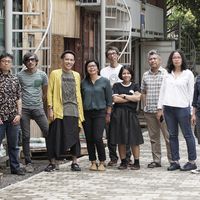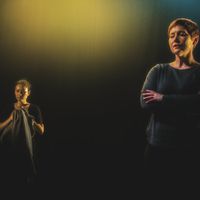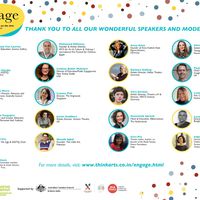Southeast Asian Arts Forum 2021 – Schoolhouse Mavericks

The Southeast Asian Arts Forum 2021 was a 3-day event organised by the Institute of Southeast Asian Arts (ISEAA) that ran from the 28th to 30th July at Nanyang Academy of Fine Arts (NAFA), Singapore. This year saw the execution of the institute’s first-ever hybrid iteration of the forum, which featured live-streamed presentations, performances and dialogue with 26 speakers from multiple artistic disciplines, streaming in from 8 different cities.
Preeti Gaonkar interviewed Dr Bridget Tracy Tan, Director for the Institute of Southeast Asian Arts (ISEAA) and Art Galleries at Nanyang Academy of Fine Arts (NAFA). In this interview, Dr Tan shares the vision behind this year’s event, the challenges faced in its execution, and her perspectives on how the arts have evolved during the pandemic.
The second edition of the seaART Forum, organised in the backdrop of the pandemic, brought together diverse voices from multiple locations across Southeast Asia that presented varied perspectives on how making, teaching and learning of art needed to be adapted in this physical interaction restricted world. Could you tell us a bit more about how the concept was developed and your vision behind this edition?
The inaugural forum focused on the School of Art. It was not just to discuss actual teaching and learning of the arts, but to entertain the idea that all scholarship and study came under one roof, in different time periods. It was modelled on Renaissance master Raphael’s fresco, The School of Athens. There was also an element of how the study of the arts was not limited only to the purview of fine arts, but also incorporated a spectrum of the sciences and the humanities.
This second forum, Schoolhouse Mavericks, took up the challenge in a pandemic year while continuing the theme of ‘school’ in pursuit of the arts. The concept of a schoolhouse is very specific: it is usually a building in a community that has multiple uses, for community gatherings, as a church, as a political arena or town hall when not in use as an actual school during the week. A maverick refers, of course, to someone who would go off and do their own thing; regardless of the majority consensus or common belief. This second part of what constitutes a maverick is important. It speaks to standing out with thoughts and ideas as alternatives to what is mainstream or self-evident. The theme was perfect for the pandemic period, when waves of change had begun to affect the way we wanted to think of art, how to teach art and how to study art, how to practice art. This is in the context of how physical space, interactions and contact so crucial to the arts were no longer possible during the pandemic. Second to this was also how the arts were regarded as non-essential (when compared to medical services, food retail and supply and so on).
We wanted to mine the sentiment on the ground, of how we could or have done things differently, uniquely, and more impactfully, as artists, practitioners and as providers and consumers of arts education. Schoolhouse Mavericks therefore epitomise the go-getting outliers, thinkers and doers, who were flexible beyond the dimensions of physical or regular spaces.
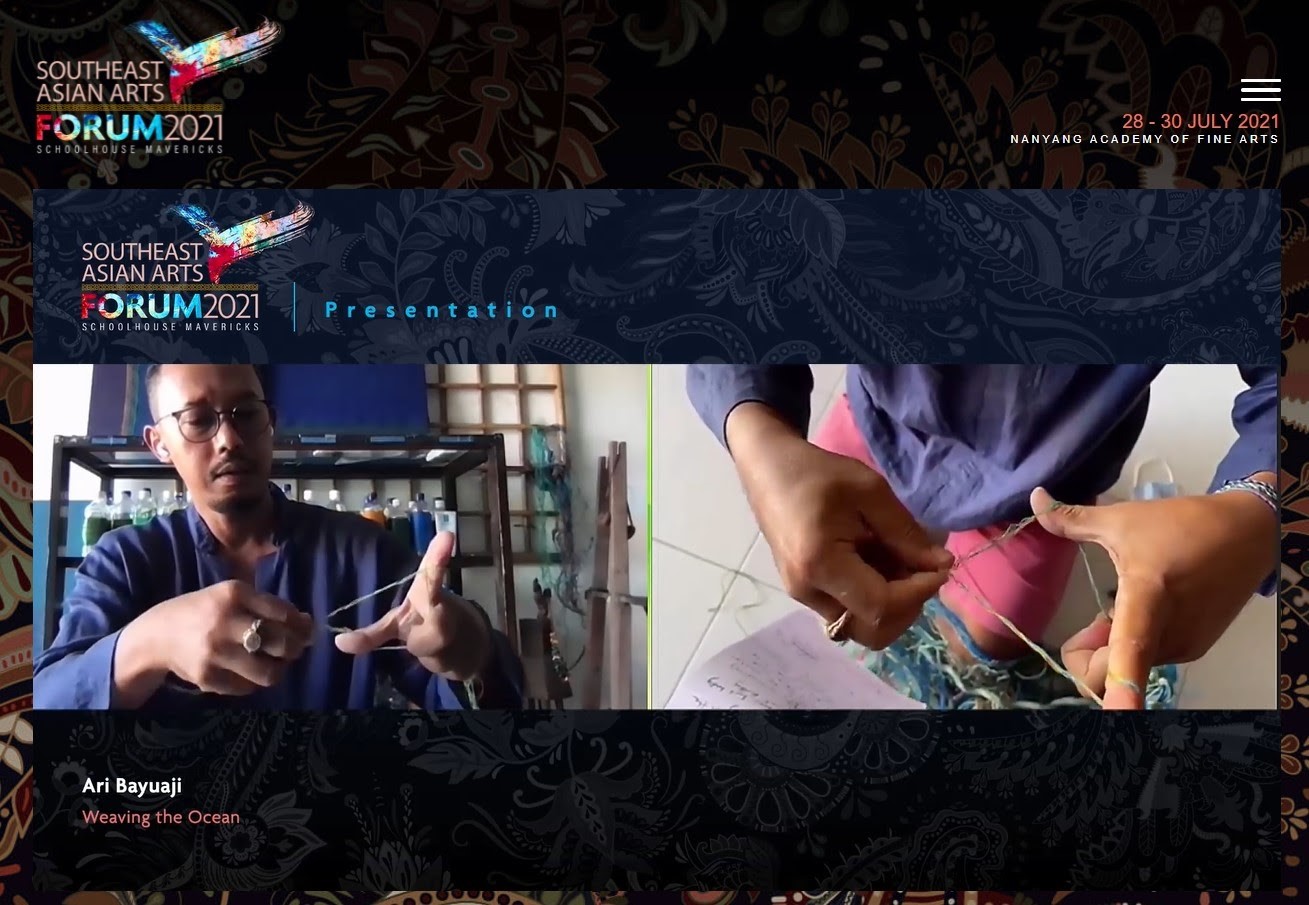
Ari Bayuaji streaming in from Bali to present his ongoing project, Weaving the Ocean
You gathered over 30 speakers from 7 countries from the region. How did you manage to design such a wide representation which also presented inspirational initiatives, innovative ideas and plenty of food for thought?
It was a challenge. It was hard work. We had to capitalise on our existing network of principals and generate enthusiasm about the enterprise. In the beginning, I was not sure this would even work out according to how we planned. But everyone who wanted to participate actually understood what our ‘theme’ was, and what we intended. In some ways, the levels of interpretation and understanding varied. I believe this is the beauty of how the theme of ‘Schoolhouse Mavericks’ coalesced, that established artists, educators, young artists, gallerist-curator collectives all felt they did have something to say and contribute. The theme was a mirror of the event: doing something different without regular recourse. In assessing the content, we did however suggest edits and provided alternative inputs to centralise the diverse approaches around chunks of the respective dialogues. This helped us in the scheduling of the presentations, the release of the Videos-on-Demand, and the rounding off with the dialogue sessions.
From the various conversations featured at the Forum, what are the 3 or 5 key themes/ideas that resonated closely with you? And do you plan on continuing these discussions or exploring any of these ideas deeper?
I cannot see the world ahead being one without physical contact or tangible experiences. From the presentations, there were many variations of how we have adapted to the prevailing conditions that limit how we engage, proffer and experience the arts. But these continue to be alternatives and a matter of survival. They are not exactly transformative.
I think one of the discussions raised an important point regarding time: during this period, we are not easily mobile and are compelled to remain in situ for longer periods of time. That this facilitates a longer process of hothousing and research; of thinking, reflecting and discoursing. Because the way we communicate has changed, we are compelled to think carefully about how we actually want to convey ideas and turn them into artistic and collaborative realities.
Lastly, the presentation by Ari Bayuaji is a great paradigm. And I had said so. He embarked on this project simply by being somewhere and experiencing the locale. He went outside and took a walk. He engaged the community towards something useful. It sounds trite, and no place is created equal. But we could all learn something from going outside, being present, taking a walk, and thinking about how we can engage the community. In urban cosmopolitan environments, opportunities and new ways of creating are often obscured. To do something differently is not only in the action. It is really a state of mind, a spirit, a way of life. If you think about this carefully, you know that changing this is a deep and enduring process that will be transformative for how we teach, study and practice the arts.
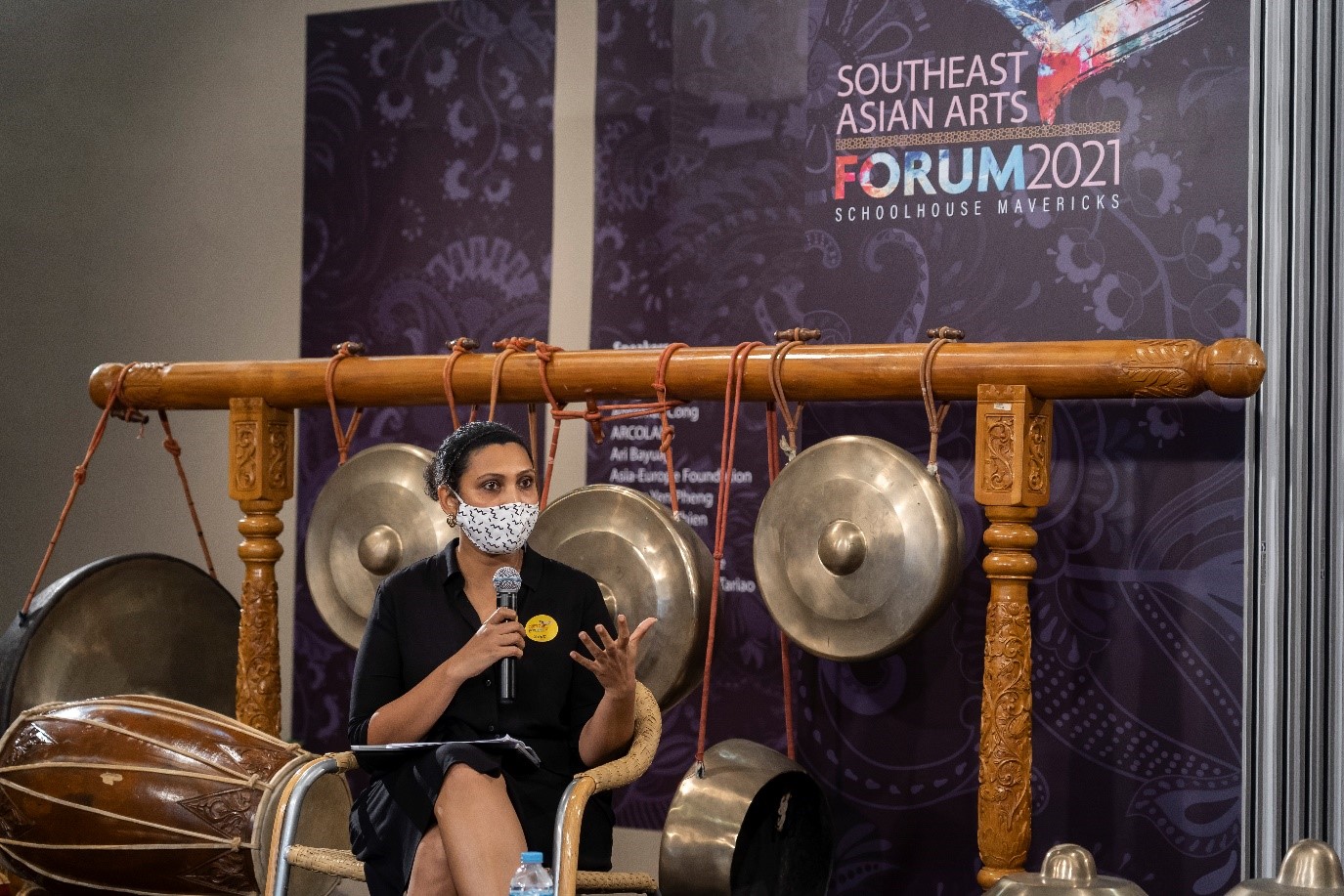
Preeti Gaonkar presenting the virtual arts residency model implemented by the Asia-Europe Foundation (ASEF) in response to the challenges posed by the pandemic.
What was your experience with the first-ever hybrid format of the Forum? What worked? What did not? How did hybrid initiative create connections for sharing and learning? Do you think such a model holds potential to be explored further?
It was nerve-wracking. We were very lucky to have a good event management team who were confident in what they were doing. Calibrating several different online participants and a live floor is not a simple task. Think of a newsroom and TV station. That kind of live broadcast arena and many individuals in different places involved.
And you know, we did drop broadcast. The line went down for about 35 minutes. We had to hold the live floor all that time, while the event management team tried to get the line back up. Although we had thought about this and prepared for it, when it actually happened, we still had difficulties. The saving grace is the fact that we had planned to record all the day’s events and make them available as an archive for registered participants. So, what those who were online had missed, was still available in the archive of that day.
With the hybrid, we had the opportunity to invite a live audience and reach out to a wider online audience. The energy with an in-person audience and activity is very different than with simply a ‘studio’ atmosphere created for online viewing; or simply the ‘talking head’. In conceptualising this event, it was important for us to go beyond the ‘talking head’. We applied this to the videos on demand as well as the presentations and the dialogues that were being broadcast live. The advantage of presenting concerns for online initiatives as experienced by the artists to an online audience, is that the real-life practicality is in the moment. The artists and presenters are conveying some of their experiences using the very same platform of outreach as what they needed to adapt to. An example is Grace Leong’s teaching methodology with Theatre employing video recording, and then having to re-present that in a video format for the video on demand. We worked with her to use certain gestures and the performative in place of merely verbal narration and images. In short, she was able to assimilate some of the ‘concepts’ through dramatic gestures to illustrate her point. When a speaker ‘moves’ inside the screen, it creates a different kind of space other than the flatness of the ‘talking head’.
This kind of reassessment and deeper involvement in the mediums we use, the technology we employ, help us to go beyond what the obvious is. There are a few videos on demand that move in this realm, not simply presented speeches, but compelling compositions and formats that transformed how we think about typical ‘conferences’ and their contents.
For us, the dialogue sessions were crucial. With anything that is being presented online, the attention time span is usually reduced exponentially. No one wants to stare at a screen for a lengthy period of time, even if they are pretending to listen, while doing something else. We wanted to hone the content by activating a robust dialogue session. And dialogue sessions that are heavily moderated need research and a keen sense of the different personalities involved. We had 7 to 8 speakers each online and in person at both the sessions. It was important to know the speakers and their works, and to be able to pose the questions towards the relevant speakers as well as coordinate the main themes once each speaker had expressed their views and perspectives.
This is what will work. A dialogue or Q&A cannot be left to being fed aimlessly through a chatbox for example; or even for the speakers to simply answer questions at random. In our experience of this forum, a heavily moderated session that makes everyone online and in-person feel engaged and involved was critical. Because it can be easy to forget someone is online and may not be able to hear clearly what was being asked or said; or to feel excluded because he or she was not able to participate in a specific question.
What could be explored further for a hybrid model is to have more correspondent hosts who will hold performative elements in their presentations in their locations. We had initially planned this with our two hosts in Malaysia and Indonesia. However, the pandemic situation got worse before getting better – and they had to shut down their premises with no opportunity for a live audience and live activity on their sites.
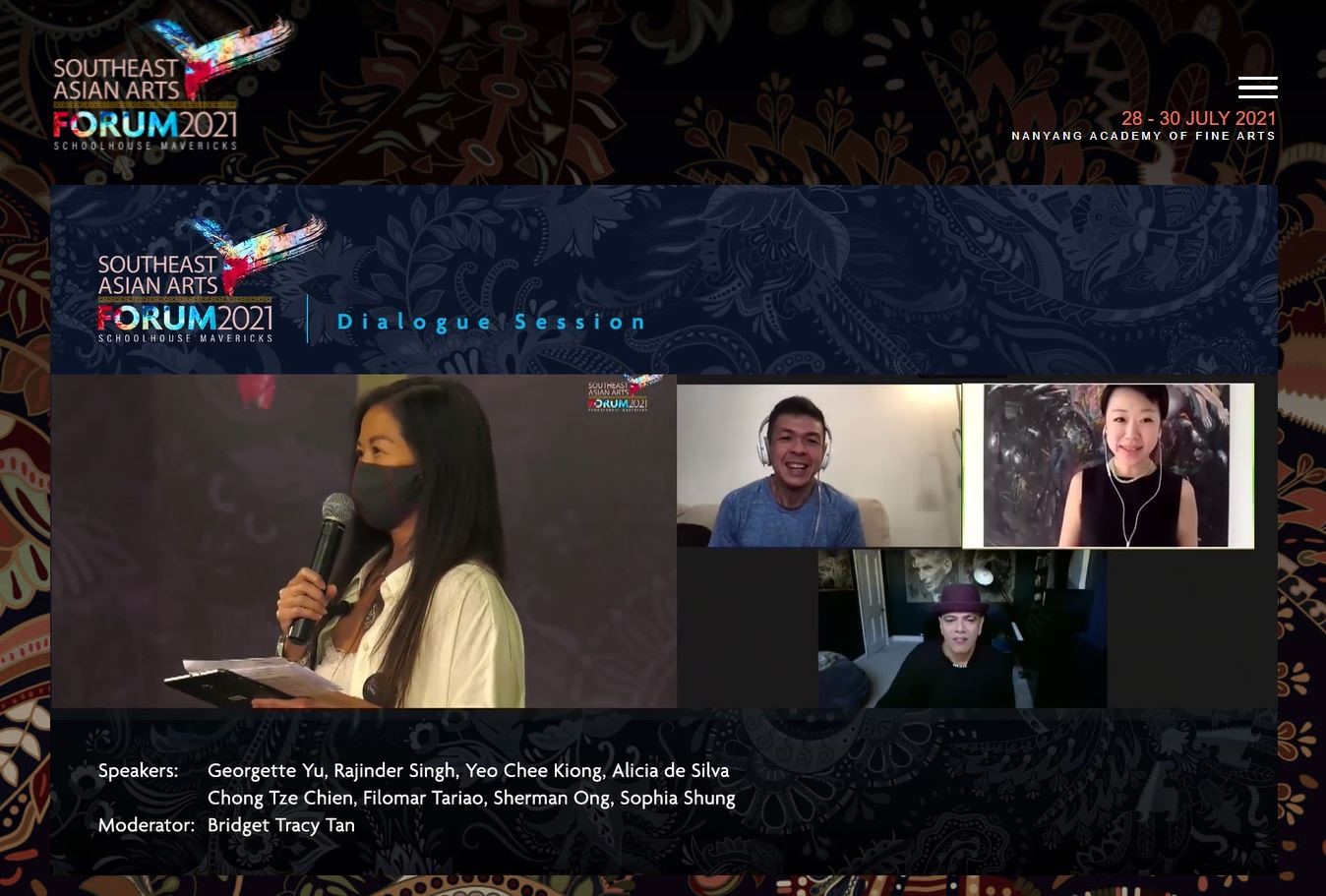
Overseas panellists streaming in to join the dialogue session in this 'hybrid' forum
There was an interesting mix of live-streamed content and digital content available on demand. How easy or complicated was it to present such a mix? What was the audience response like?
We are lucky that we had a very good event manager and support unit. The actual presentation leveraged an active microsite platform. We had one dress rehearsal and that was enough to manage the coordination issues.
The difficult part is really the preparation, when you are working with speakers to ensure they keep their presentations to a time limit and populate their presentations with the right amount of moving imagery, images, text and narrative. And to have ensure there is a good mix of cinematic works with the more straightforward documentary style works. You might have noticed we had a mix of videos online that ranged from 5 mins to about 20 mins. The point was to provide a menu of diverse offerings that would pique the interests of registrants who wanted to explore the content. For the live content, it was more to ensure there was a compelling reason why such content should be live. In every forum/conference event, you know you need the key content to be evaluated in interesting ways to capture the attention of the audience, leave them wanting to participate, to know more, to engage.
I believe we succeeded in engaging the audience, and I believe we made it interesting enough to hold their attention variously for 2.5 hours on each of the 3 days. We had over 300 unique logins for the 3 days. This, to me is an accomplishment. It means over 300 people logged on and stayed on.
We were also able to obtain feedback from our online survey. About 70% felt they learnt something new; and about 70% thought the speakers were knowledgeable in their respective fields. 66% enjoyed the forum overall.
The two most interesting comments I found were:
“Gathering of arts practitioners from around the world provided this infectious energy to create and make.”
And
“(it was a forum) That I can attend even if I am was not on site. And I found out more artists in Asia that I can learn from.”
There were also a number of other comments on how registrants enjoyed the dialogue sessions. When people take the trouble to actually write the comments out, this becomes more meaningful than just checking a box for a number.
As the impact of the pandemic continues to loom over us, what kind of developments do you envision in the arts making and teaching fields? How can arts teaching and learning continue to evolve in this hyper digital age?
This seems like such an innocuous question about predictions and concepts. But I see it differently.
It would be arrogant of me to presume to know the answer or to believe there is an answer. I would like to think that with the arts, there is a kind of organic quality to how things evolve, pedagogy included. We cannot avoid the hard skills and technological advances we all have to acquaint ourselves with to get ahead. However, as I mentioned earlier – I am of the school of thought that you cannot have the practice of the arts without true tangible encounters. If critics want to counter this with “what about reading a book?” Think of all the writers who moved to countries other than their own to embark on or fuel their writing career. Or those who spent a great deal of time in a ‘summer home’ or an alternative home for some part of the year in order to write. Beyond writers, many arts practitioners have found themselves in this kind of migration pattern. But back to the book. When you read the book, you have a visceral experience of that person who navigated a tangible experience in order to write it out.
The arts will always be about people, and we have to organically evolve with the people we encounter. In the teaching and learning of arts under normal circumstances, no two students or lecturers learn and teach alike. Responses are based on real-time experiences and exchanges that transform processes and how we establish and build knowledge.
The logical response then would be to say, as the pandemic progresses or regresses, teaching and learning of the arts will continue to evolve. The necessary changes and refinements made are based on how we believe we can grow the possibilities better. I do believe that craft of arts and fine arts in general, can influence digital technology and the digital space. To me, it is more compelling to see how this fundamentally changes the way we interact with one another and create new perspectives and knowledge in the teaching and study of the arts.
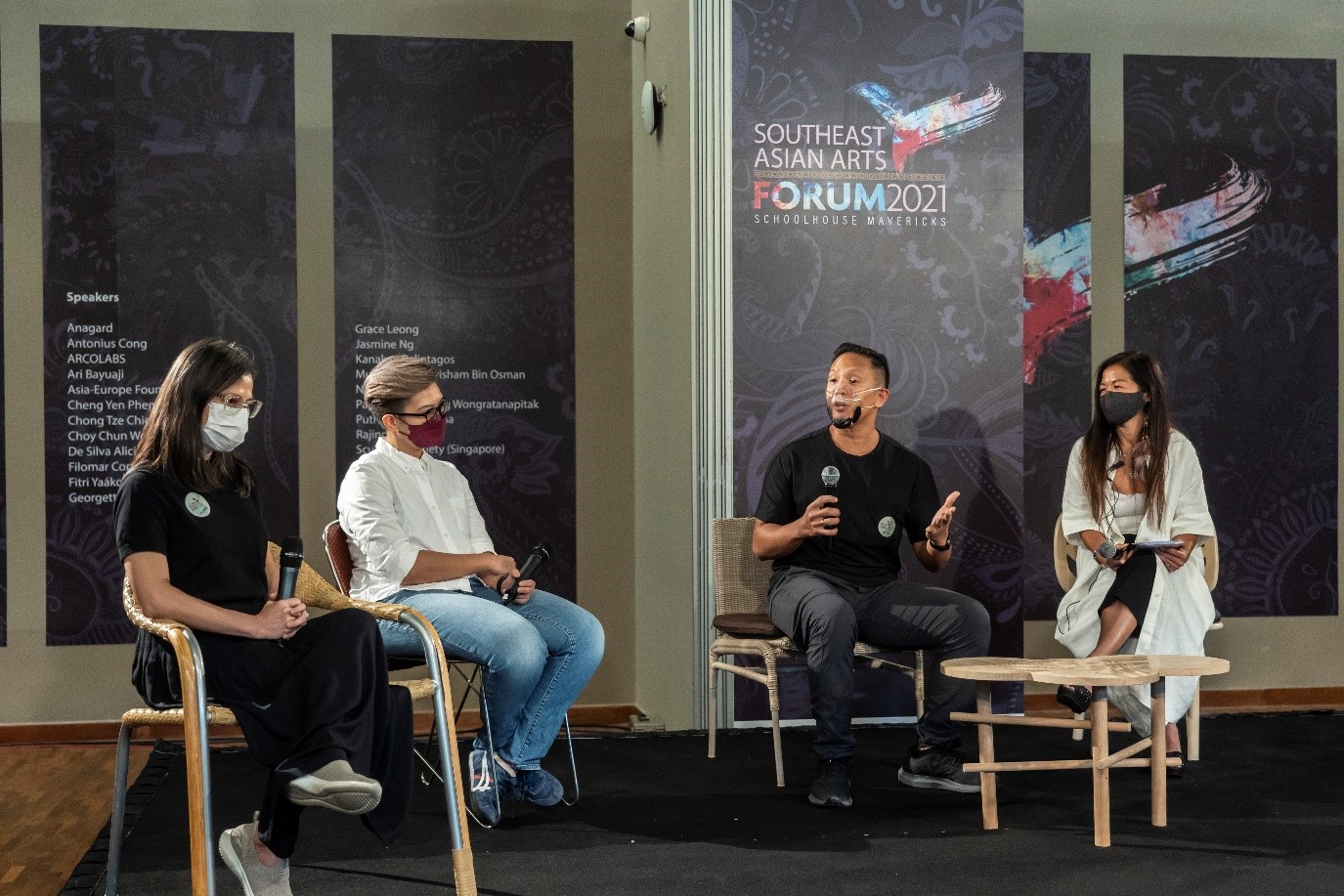
Panellists on stage for a dialogue session- the importance of physical interactions in cultural expressions and the Southeast Asian identity
What does the future hold for seaART Forum in 2022 and beyond?
The forum was conceived in 2019 as a biennial event. 2021 has been an extraordinary year. There has been some discussion as to whether we can have the forum as an annual event.
There are a few things to consider. One is how we scale the event. It is clear that we cannot have a forum of the scale we had in 2019 and indeed in 2021. It takes a tremendous amount of work to prepare, to coordinate and most importantly to make the content relevant so there are people who are interested in being a part of our forum. You know, it is easy to organise a forum. The hard part is making sure people are interested and to get people to attend the forum.
With the many online events, we don’t want people to have online attendance/screen fatigue.
I believe if we want to do something, it has got to be an exciting project that everyone wants to be a part of. The energy of those who are our partners and those whose work we are engaged with, will tell us when our next forum could happen and in what shape and form.
In the meantime, we have some spinoffs to work on with some of the principals. We are already conducting hybrid programmes with Kansadaeng Watthanatham in classical Thai Dance and Nang Yai puppetry coming up next week. We are going to ask Ari Bayuaji to design a project that conceptually mirrors what he is doing in Bali and see if it could work in Singapore for a core group of our students.
The way we engage is not by a single event alone – we are constantly following our artists and collaborators and finding out what they are up to. This kind of dynamic helps us realise where the collaborative opportunities are and to keep on the pulse of what is happening.
ASEF culture360 was the media partner for the Southeast Asian Arts Forum 2021.
Similar content
from - to
28 Jul 2021 - 30 Jul 2021
By Kerrine Goh
12 Feb 2012


